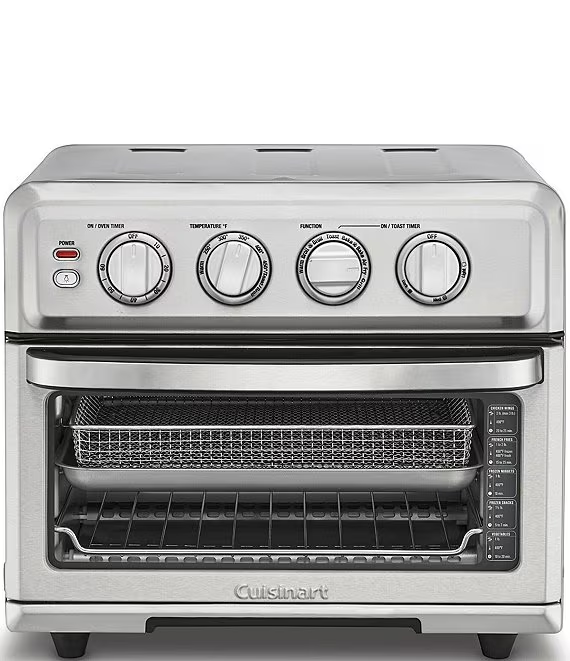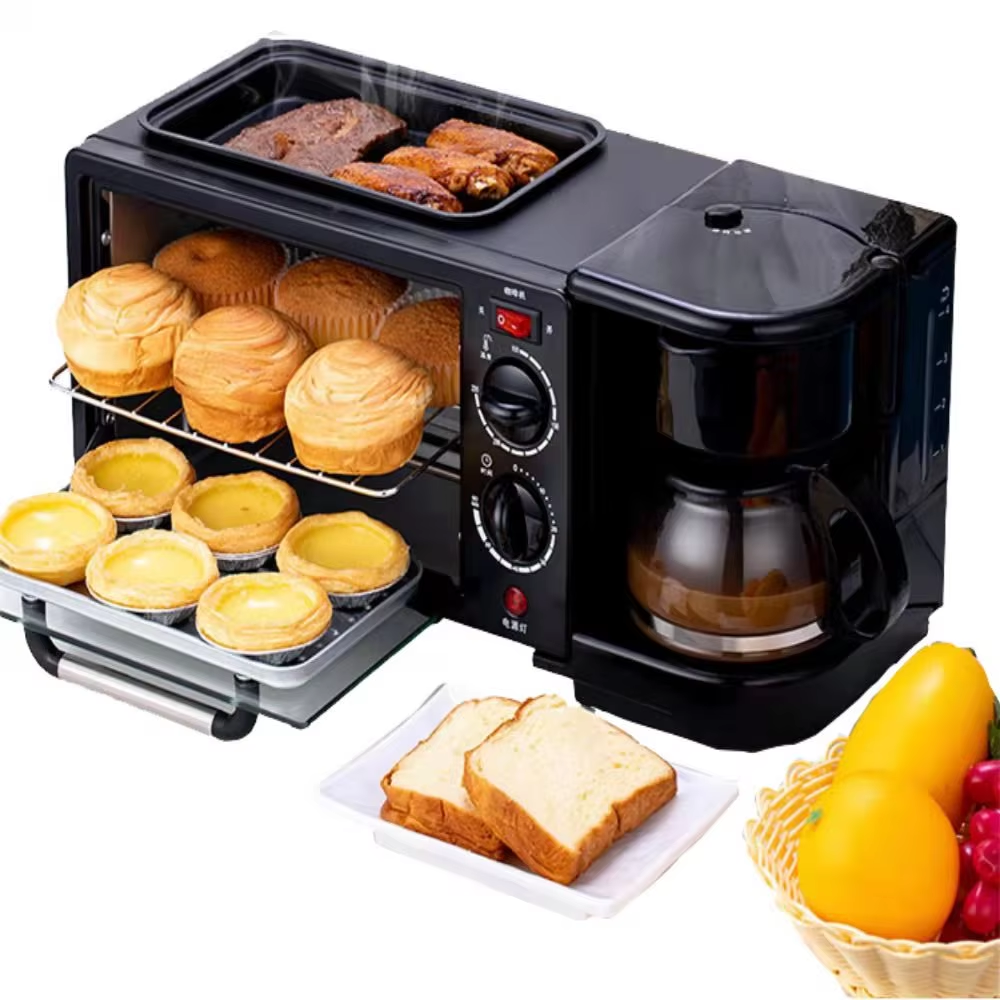Let’s be honest, finding the perfect toaster feels like it should be simple. It’s just a box that heats bread, right? Well, yes and no. As the Senior Product Expert here at The Toaster World, I’ve spent years diving deep into the world of golden-brown perfection, and I can tell you that the difference between a mediocre toaster and a great one is the difference between a frustrating morning and a delightful one. Understanding What To Look For In A Toaster is the first step toward reclaiming your breakfast. It’s about more than just avoiding burnt edges; it’s about finding a reliable kitchen companion that consistently delivers your ideal slice, day in and day out.
So, grab a coffee, and let’s walk through everything you need to know. By the end of this guide, you’ll be able to choose your next toaster with the confidence of a pro.

A Quick Trip Through Toaster History
Before we dive into the specs, a little perspective helps. The toaster wasn’t born in a high-tech lab. The first commercially successful electric toaster, the D-12 from General Electric, appeared in 1909. You had to manually turn the bread slice to toast the other side. It wasn’t until 1919 that Charles Strite invented the pop-up mechanism, forever changing our breakfast routine. This journey from a simple heating element to today’s smart devices shows a constant quest for the perfect toast. Understanding this evolution helps us appreciate the features we now take for granted.
First Things First: What Kind of Toaster Do You Need?
The first decision point is the form factor. Your counter space, family size, and what you plan to toast will guide your choice here.
The Classic Pop-Up Toaster
This is what most of us picture: a compact device with two or four vertical slots. It’s the undisputed champion of speed and efficiency for standard bread slices.
- 2-Slice Toasters: Perfect for individuals, couples, or small kitchens. They are space-savers and generally more affordable.
- 4-Slice Toasters: A must-have for larger families or anyone who hates waiting. Be aware that they come in two main configurations: four slots side-by-side or two long slots that can each fit two standard slices.
The Toaster Oven
A toaster oven is a multi-talented countertop appliance. It can toast, of course, but it can also bake, broil, and reheat.
- Pros: Incredible versatility. You can make melted cheese sandwiches, reheat pizza without it getting soggy, or even bake a small batch of cookies.
- Cons: They take up significantly more counter space and are generally slower at toasting bread compared to a pop-up model.
The Long-Slot Toaster
This is a fantastic hybrid option. Long-slot toasters typically have two extra-long, extra-wide slots, making them perfect for non-standard items. If you’re a fan of artisan breads like sourdough, ciabatta, or bake your own loaves, this is your champion.
Key Features: What to Look for in a Toaster
Okay, you’ve chosen a type. Now, let’s get into the nitty-gritty details. These are the features that separate the good from the great.
Slot Size and Design
How wide and long are the slots? This is arguably the most important feature. Standard slots might not fit a thick-cut bagel or a hearty slice of sourdough.
- Wide Slots: Look for slots that are at least 1.5 inches wide. This accommodates bagels, thick-sliced bread, and English muffins with ease.
- Self-Centering Guides: This is a non-negotiable feature for me. Internal guides grip the bread slice and hold it perfectly in the middle of the heating elements, ensuring beautifully even toasting on both sides.
Browning Control
How much control do you have over the final result? Your idea of “perfectly toasted” might be different from your partner’s. Good browning control is key.
- Shade Settings: Most toasters offer a range, typically from 1 (lightest) to 5 or 7 (darkest). More settings mean more precision.
- Consistency: A great toaster delivers the same shade on setting 4 today as it did yesterday. Cheaper models can be inconsistent, which is a common source of frustration.
Essential Functions and Presets
Modern toasters come with a few “magic buttons” that can make your life much easier.
- Bagel Setting: This is a brilliant feature that toasts the cut side of the bagel while gently warming the crusty back. It’s a game-changer for bagel lovers.
- Defrost Setting: Toasts bread straight from the freezer. It typically adds extra time to the toasting cycle to thaw the bread first, preventing a burnt outside and a frozen inside.
- Reheat Setting: A short, gentle cycle to warm up toast that has gone cold without browning it further. Perfect for when the coffee machine demands your attention mid-toast.
- “Lift and Look” or “Peek” Feature: This allows you to pause the cycle and lift the bread to check its progress without canceling and restarting. I absolutely love this feature for getting things just right.
Build Quality and Ease of Cleaning
Will it last, and is it a pain to maintain? A toaster is something you use daily, so it needs to be durable and easy to care for.
- Materials: Stainless steel housing is generally more durable and easier to clean than plastic, though high-quality plastic can be fine too.
- Removable Crumb Tray: This is essential. A slide-out tray at the bottom catches crumbs and makes cleaning a breeze. Without it, you’re stuck turning the toaster upside down and shaking it over the sink, which is messy and inefficient.
- High-Lift Lever: A lever that can be pushed up an extra inch or so makes it easy to retrieve smaller items like English muffins without burning your fingertips.

How to Use and Maintain Your Toaster Effectively
Getting the most out of your appliance goes beyond just buying the right one. A little care ensures years of perfect performance.
- Read the Manual: I know, I know. But it often contains useful tips specific to your model.
- Do a “Burn-In” Cycle: Before your first use, run the toaster on a medium-high setting without any bread. This will burn off any manufacturing residues and prevent your first slice of toast from tasting metallic.
- Empty the Crumb Tray Regularly: Aim for at least once a week. A buildup of crumbs is not only messy but also a potential fire hazard.
- Never Use Metal Utensils: Never stick a knife or fork into a toaster to retrieve a stuck piece of bread, especially when it’s plugged in. Unplug the appliance and gently shake it out.
- Wipe Down the Exterior: Use a soft, damp cloth to clean the outside. If it’s stainless steel, a little white vinegar can help remove fingerprints.
Creative Ways to Use Your Toaster
Think your toaster is just for bread? Think again!
- Crisp up Waffles or Pancakes: Pop frozen waffles or leftover pancakes in for a quick, crispy breakfast.
- Toast Nuts or Seeds: Use a toaster oven on a low setting to lightly toast nuts or seeds for salads and baking.
- Make Quick Croutons: Cube day-old bread, toss with a little olive oil and herbs, and toast in a toaster oven until golden.
- Warm up Naan or Pitta Bread: A quick pop in a wide-slot toaster can bring flatbreads back to life.
Comparing Top Toaster Brands and Models
Navigating the market can be tough. Brands like Breville are known for their smart, feature-rich “Smart Toaster” models, while KitchenAid and Smeg offer fantastic performance with a focus on retro design and color. On the more budget-friendly side, Cuisinart and Hamilton Beach provide reliable toasters that get the job done without breaking the bank.
“A great toaster doesn’t just apply heat; it respects the bread. It understands the difference in moisture between a dense rye and a light brioche. The best models use intelligent heating elements to achieve that perfect Maillard reaction—the chemical process that gives toast its distinctive flavor and color—every single time.” – Dr. Eleanor Vance, Culinary Appliance Historian
Here is a quick comparison table to illustrate the differences you might find:
| Feature | Budget Model (e.g., Hamilton Beach) | Mid-Range Model (e.g., Cuisinart) | Premium Model (e.g., Breville) |
|---|---|---|---|
| Price Range | $25 – $50 | $50 – $100 | $130 – $250+ |
| Slot Width | Standard to Wide | Wide | Extra-Wide, Self-Adjusting |
| Browning Control | 5-6 settings dial | 7 settings dial, LED indicators | Digital slider, precise control |
| Special Functions | Defrost, Cancel | Defrost, Bagel, Reheat | “Lift & Look”, “A Bit More”, Bagel |
| Build Material | Mostly Plastic | Plastic & Stainless Steel | Brushed Stainless Steel |
| Key Selling Point | Affordability | Great value and features | Unmatched consistency and smart tech |
Frequently Asked Questions
Q: What is the most important feature to look for in a toaster?
A: The most critical features are slot size and the presence of self-centering guides. If the slots can’t fit your favorite type of bread or don’t toast it evenly, all other fancy features become irrelevant.
Q: Why is my toaster toasting unevenly?
A: Uneven toasting is often caused by misaligned or broken heating elements, or the lack of self-centering guides. In cheaper models, the heating element coverage may simply be inconsistent from the start.
Q: What is the difference between a cheap and an expensive toaster?
A: The primary differences lie in build quality, consistency, and smart features. Expensive toasters use more durable materials, have more precise browning controls, and offer features like “Lift and Look” for a more controlled and repeatable toasting experience.
Q: How many watts should a good toaster have?
A: Wattage generally ranges from 800 to 1500 watts. While higher wattage can mean faster toasting, it’s not the only indicator of quality. Even toasting technology and browning controls are more important for the final result.
Q: Can I toast a bagel in a regular toaster?
A: You can, provided the slots are wide enough. However, for the best result, use a toaster with a dedicated “Bagel” setting, which toasts the cut side more intensely while gently warming the outside.
Your Perfect Toast Awaits
Choosing a new toaster is an opportunity to upgrade a small but significant part of your daily routine. By focusing on what matters most to you—whether it’s perfect sourdough slices, quick frozen bagels for the kids, or a stylish addition to your countertop—you can find the perfect match. Remember to consider the slot size, browning consistency, and the key functions that will simplify your morning. After all, life is too short for bad toast. Now that you know what to look for in a toaster, you’re well on your way to finding an appliance that will bring you joy for years to come.